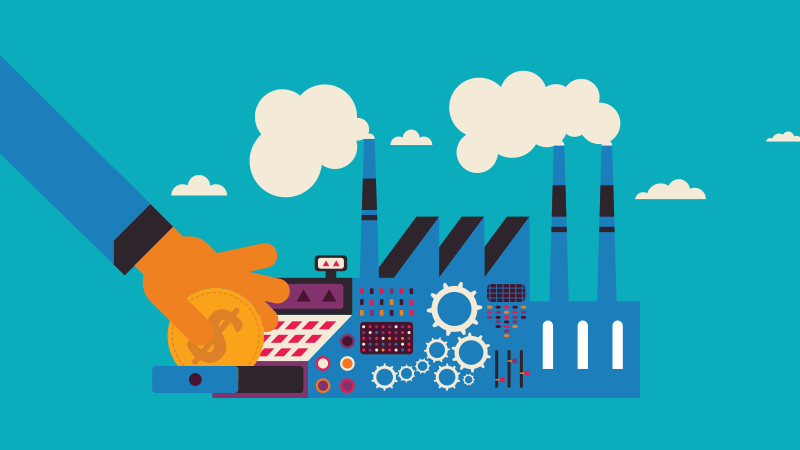There have been
a number of prognostications in recent months regarding prospects for the U.S.
economy in the coming months. Some of
them may be driven by political operatives seeking to claim a strong economy as
one of Donald Trump’s accomplishments.
True enough, the U.S. economy is growing and in the second quarter 2018,
growth hit an impressive 4.1%. Federal
government spending and a tax stimulus have been key elements in that
growth -
both of which have come about because Congress has been eager to curry
favor with Trump’s program.
It is yet to be
determined just how long the U.S. can continue to spend so much more than it
collects in taxes. Donald Trump is very
familiar with bankruptcy and therefore may have a greater comfort level with that
calamitous outcome than the rest of us.
While some voters appear unfazed by the building federal deficit, others
are grasping about for the life vests.

Capital spending
is seen as a possible salvation. It is a
strong growth driver when businesses purchase physical assets. It does not matter whether the shopping list is
to maintain and replace existing facilities, invest in an expansion or even start
up new commercial plant. According to
the U.S. Bureau of Economic Analysis capital spending hit a record $2.7 billion
in the third quarter 2018. While
transportation equipment purchases are off in recent quarters, businesses have
stepped up spending on equipment, intellectual property and information processing
equipment.
Looking ahead it
is the pace of capital spending growth that is important. From this perspective the scene is not quite
as beautiful. The pace in year-over-year
growth in capital spending has slowed in recent years. According to Focus Economics, an economic
research firm, growth in investments slowed in 2017 to 4%. This compares favorably to capex growth in
2016, but is still well off growth in capital spending in 2014, when business
ramped up capex by 6.2%. There is no
published estimate of growth in capex in the current year.
Even as the
nominal numbers impress, we have another measure that gives reason for
pause. According to Standard &
Poor’s, in the first half of 2018, U.S. companies showed a strong preference to
use tax savings and other federal government breaks to fund stock buybacks. Among the companies in the S&P 500 Index,
share repurchases grew by 43% in the first half of 2018, while capital spending
limped along with a 27% increase. It is
clear, that corporate savings coming from Donald Trump’s tax reform would end
up in the hands of stockholders. That
does not bode well for economic growth in 2019 and beyond.
There is another
problem with relying on capital spending to keep the economy going. Capital spending closely associated with
certain industries - transportation, manufacturing, energy
production. Yes, as much as 80% of the
U.S. economy is composed of service type businesses wherein human capital
dominates spending. For capital spending
to really drive the U.S. economy, we are dependent upon those particular
segments that provide services in large structures such as hospital and
hospitality.
Can the big
capital spenders be persuaded to shell out money for equipment and structures
next year? Donald Trump’s trade tariffs
strategy kicks into high gear in 2019.
The tariffs will push up U.S. production costs and this is bound to slow
growth. Indeed, the International
Monetary Fund has already warned of a slowing in global due to the disruption
in the highly integrated supply chain activity due to the U.S. trade tariffs. As a consequence, some businesses may decide
to pull back from previous plans to add capacity or improve plant facilities
until the trade issues are resolved.
In sum, corporate
decision makers are prone to use tax savings to line their own pockets with
share buybacks anyway. As for the money
left over, at the first sign of trouble ahead, those same decision makers are
more likely to hold back on investment spending than take a chance of Trump
delivering a favorable trade agreement.
Will the capex ‘floatie’
hold up in the sometimes turbulent waters of the world economy? Maybe, maybe not. Investors can formulate their own
probabilities. Just to be on the safe
side investors might do well to reduce expected returns with a lower growth
estimate.
Neither the author of the Small Cap Strategist web
log, Crystal Equity Research nor its affiliates have a beneficial interest in
the companies mentioned herein.
No comments:
Post a Comment